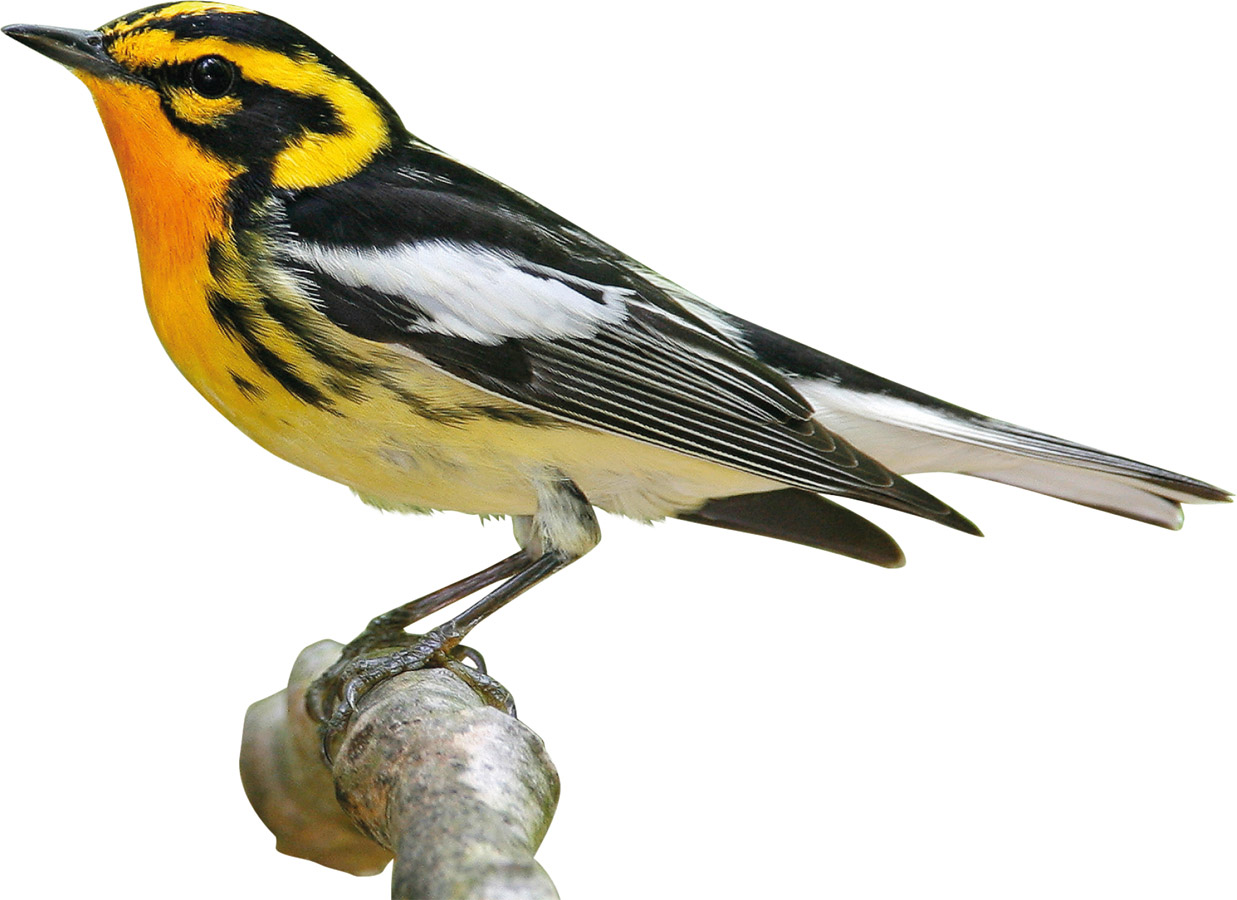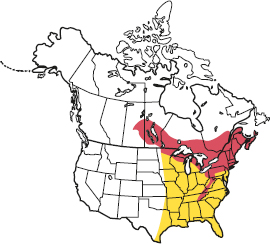Setophaga fusca

male
The Blackburnian Warbler is a strikingly marked songbird. The sexes are dissimilar. Adult summer males have a black back, nape, and crown. The wings are black with a broad white patch on the coverts and pale edges to the flight feathers. The mainly black tail has white patches on the outer feathers. The face is orange with a black patch through the eye, and the throat is orange (unique among wood warblers). The breast is yellowish with dark streaks on the flanks, and the underparts are otherwise white with black streaks. Adult females are similar to an adult male but black elements of the plumage are streaked grayish yellow and the face is yellow, not orange. Adults in fall are similar to a summer female but less colorful, and immatures are similar but duller and paler still.
The Blackburnian Warbler is present as a breeding species in forests in northern North America and eastern mountain ranges mainly from May to August. It spends the rest of the year in South America. Typically it forages in the treetops, making observation a bit of a challenge.

female
FACT FILE
LENGTH 5 in (12.5 cm)
FOOD Invertebrates
HABITAT Northern and montane conifer forests
STATUS Widespread and common summer visitor
VOICE Song is often a series of very high-pitched notes that ends in a trill. Call is a sharp tsik
![]()
